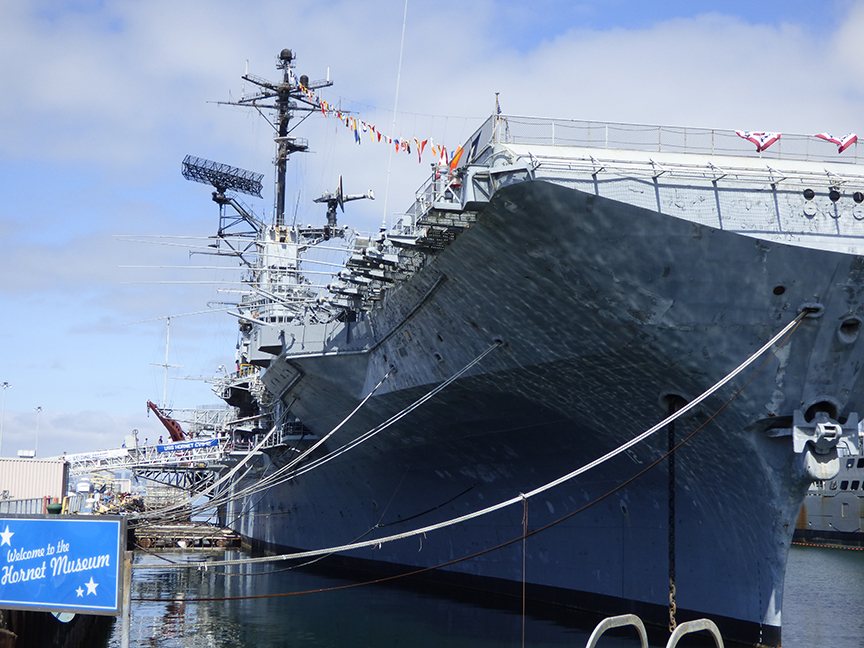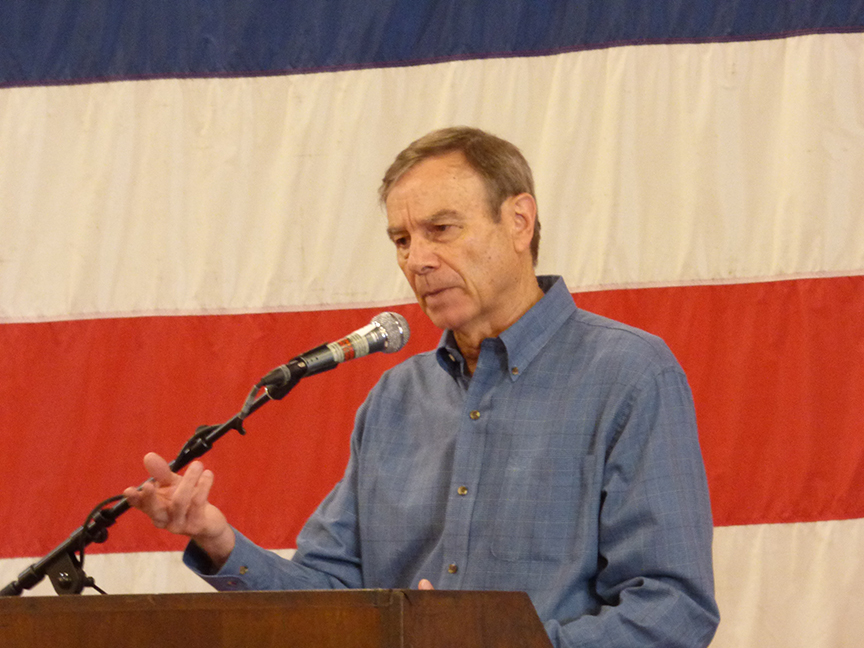It has come time to commemorate the 50th anniversary of one of the greatest achievements ever attained by the United States, the Moon Landing. On July 20, 1969, together we walked on the moon as a nation. The aircraft carrier USS Hornet, was the designated rescue vessel to recover our astronauts from Splashdown nearly 50 years ago today. Onboard the USS Hornet, is the Mobile Quarantine Facility (MQF), where Commander Niel Armstrong, Command Module Pilot Michael Collins and Lunar Module Pilot Edwin “Buzz” Aldrin were housed for the next three weeks, terminating any pathogens or “moon germs” our astronauts may have acquired in space that could potentially be harmful for us on Earth. It was astonishing to learn about their living situation inside the MQF, which contained a living and sleeping quarters, a kitchen and one bathroom for three astronauts, a surgeon and a mechanical engineer.

For the next three weeks, it was Bill Carpentier’s job to monitor our heroic astronauts for any symptoms of sickness or illness after their long journey. Bill placed himself inside the MQF alongside the astronauts and John Hirasaki as they both drew the shorter end of the stick that day.

However, Bill states: “It was John Hirasaki’s job to cook, while I got to bartend” and after further discussion, it was later uncovered that John H, through his wife’s eyes “is actually a heater and not a cook”. Once stationed in the MQF, John Hirasaki’s responsibility was to minimize any contamination or spread of pathogens into Earth’s biosphere from the landing and all the way to the MQF. Although, it may look like a classic Aitstream trailer, the MQF is equipped with all the essentials to fight extraterrestrial life that could be potentially catastrophic for Earth. By properly ventilating the air from the facility and keeping the inside pressure lower than the pressure outside, helping reduce and fight airborne pathogens spreading.
Alongside the noble men that risked their lives for the safety of our Earth, were Bill Duncan and Bruce Johnson. Bruce operated the primary helicopter designated to retrieve our astronauts, while Bill manned the media helicopter as the flight crew landed back on Earth. Both men hovered over the Pacific Ocean on the splashdown of Apollo 11, ensuring the safe retrieval of the flight crew while simultaneously capturing breathtaking media footage some still remember to this today. While listening to the panel of these great men speak, we could view a slideshow of the original photographs taken that day thanks to Bill’s piloting. Many may recall Clancy Hatleberg, the first man, frogman, to interact with the astronauts by jumping out of the helicopter which was manned by Bruce Johnson, and into the ocean. Clancy’s mission was not only to retrieve the flight crew, but to disinfect them and the vessel they were in using chlorine bleach, minimizing the possibility of contamination from life outside Earth.

After the panel discussion was over and the crowd disintegrated and dispersed, roaming around the ship admiring many of the extraordinary attractions centered around Apollo 11 and space technology. Eventually, I had the fortunate opportunity to meet with John Stonesifer and discuss in more detail the management of the MQF and his role throughout the entirety of the flight crews three-week stay, along with Dr. Bill Carpentier and John Horsaki. Witnessing the 50th anniversary of Apollo 11 and one of our greatest achievements leaves me looking forward to the 60th anniversary and the progression we have made since then.
Leave a Reply